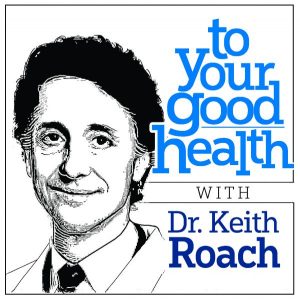Alarming rate of false positives plagues lung cancer screening
By Dr. Keith Roach — July 31, 2022 DEAR DR. ROACH: I’m a 74-year-old female who smoked a pack a day for 40-plus years, having quit smoking about 18 years ago. As a precaution, I asked my primary doctor to order a screening CT scan, knowing that I’m a candidate for lung cancer. The results showed a 3-mm nodule in one lung, and I was advised not to worry and that my doctor would order another CT scan in six months. I can’t help but wonder if this is cancer and if an oncologist, after six months, will ask me why I waited so long to see him. — T.W.
DEAR DR. ROACH: I’m a 74-year-old female who smoked a pack a day for 40-plus years, having quit smoking about 18 years ago. As a precaution, I asked my primary doctor to order a screening CT scan, knowing that I’m a candidate for lung cancer. The results showed a 3-mm nodule in one lung, and I was advised not to worry and that my doctor would order another CT scan in six months. I can’t help but wonder if this is cancer and if an oncologist, after six months, will ask me why I waited so long to see him. — T.W.
ANSWER: Medical professionals have been attempting to screen for lung cancer for decades. Chest X-rays proved insensitive: By the time cancer could be seen on X-ray, it was usually too late to do anything about it. CT scans are much more sensitive (maybe too sensitive; see below), and studies have shown that some lives will be saved with a screening program. However, the number of people who would benefit is relatively small. 256 moderate-to-heavy smokers would need yearly screening for three years in order to prevent one lung cancer death.
There are two other significant concerns about lung cancer screening. The first is the issue you have now: an abnormal result and what to do about it. It’s extremely common. Almost 25 percent of scans will be abnormal, and 96 percent of the abnormal results will be false positives. But it will require multiple scans, and sometimes an invasive procedure, to prove it. This means a great deal of anxiety among people who get the type of result you did.
The small size of your nodule means the risk that this nodule is cancerous is much lower than 1 percent. A follow-up scan is the usual recommendation, and if the nodule is the same size or smaller, the chance of it being cancerous is very close to zero. You should have had a careful explanation of the likelihood of false positive results before getting the scan. You also should have been warned of the possible need for a biopsy and the possible financial costs associated with follow-up testing.
The second concern is that current smokers who consider screening should receive intensive advice and help in quitting smoking. A negative CT scan is not a “clean bill of health” for a smoker, and quitting remains to be the single most important thing most smokers can do for their overall health.
***
DEAR DR. ROACH: I am 90 years old. My husband and I donated blood as often as needed — over 100 times — but last week, my doctor said I tested positive for syphilis. I about fell off my chair. I haven’t slept for four nights. Have you ever heard of this? — E.
ANSWER: The screening test for syphilis, called the VDRL or RPR test, is not particularly accurate. About 1-2 percent of people will have a false positive result, meaning that the test is positive, but they do not have syphilis. There are many possible causes, such as infection and autoimmune diseases like lupus, but some people, particularly older people, will have a positive test for no identifiable reason.
In your case, I am sure it is a false positive, but your doctor may do a more specific test, such as an FTA-ABS, to be 100 percent sure. You shouldn’t let it keep you awake at night.
Dr. Roach regrets that he is unable to answer individual questions, but will incorporate them in the column whenever possible. Readers may email questions to ToYourGoodHealth@med.cornell.edu
© 2022 North America Synd., Inc.
All Rights Reserved







